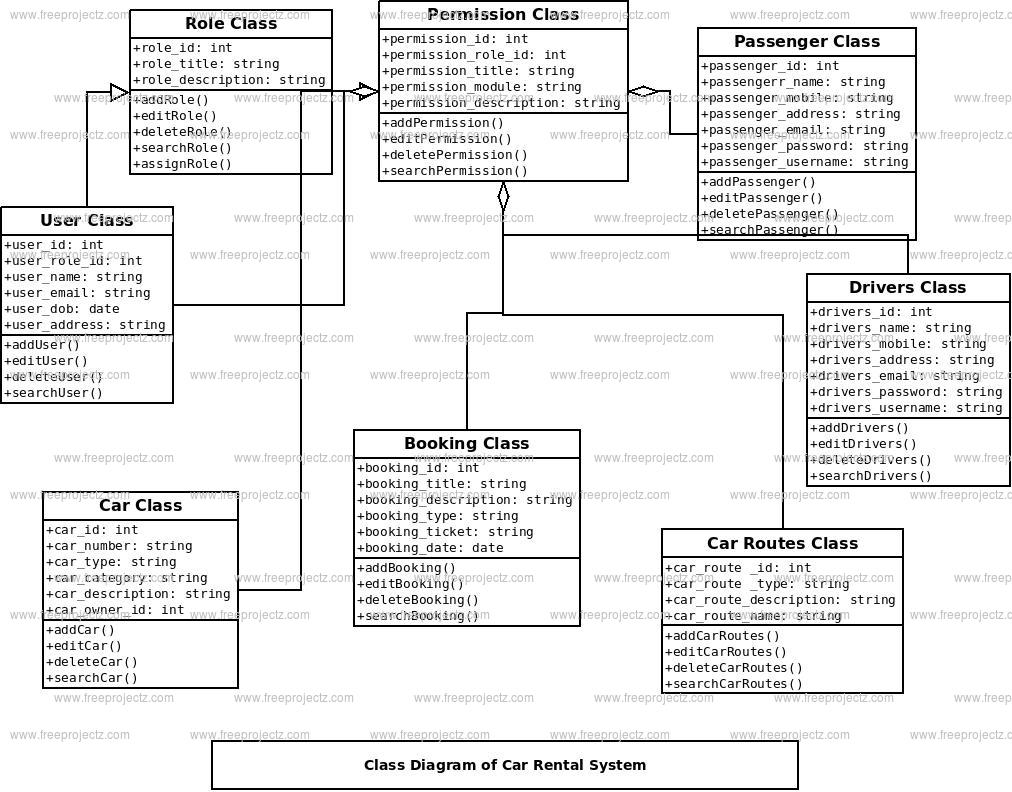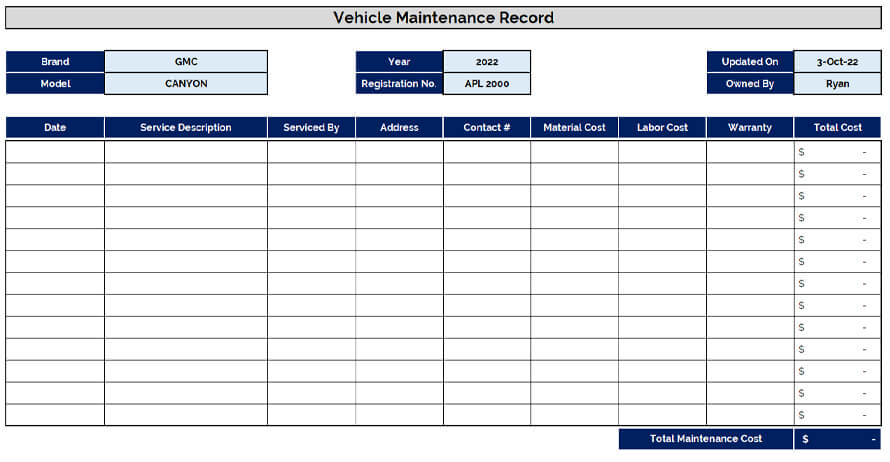Acquiring the Right Vehicles for Your Rental Fleet
When it comes to building a successful car rental business, selecting the right vehicles is crucial. The type of cars you choose can significantly impact your business’s success, as it affects your target audience, market demand, and competition. To get cars for your car rental business, you need to consider several factors, including the type of vehicles that are in high demand, the competition in your area, and the target audience you want to cater to.
For instance, if you’re targeting budget-conscious travelers, you may want to consider acquiring compact cars or sedans that are fuel-efficient and affordable. On the other hand, if you’re targeting luxury travelers, you may want to consider acquiring high-end vehicles that offer premium features and comfort.
Additionally, you need to consider the maintenance and repair costs of the vehicles, as well as their insurance costs. It’s essential to choose vehicles that are reliable, durable, and easy to maintain to minimize downtime and reduce costs.
Another critical factor to consider is the brand reputation and image. You want to choose vehicles that are well-known for their quality, reliability, and performance. This will help you build trust with your customers and establish a positive reputation for your business.
By carefully selecting the right vehicles for your rental fleet, you can increase customer satisfaction, reduce costs, and ultimately drive business success. Whether you’re looking to acquire cars for a new car rental business or expand your existing fleet, understanding your target audience, market demand, and competition is key to making informed decisions.
Exploring Options for Sourcing Cars for Your Rental Business
When it comes to acquiring cars for your rental business, there are several options to consider. Each option has its pros and cons, and the best choice for your business will depend on your specific needs and circumstances. Here are some of the most common ways to source cars for your rental business:
Purchasing from dealerships is a popular option for many car rental businesses. Dealerships often offer a wide range of vehicles, and you can negotiate the price based on the number of cars you’re purchasing. Additionally, dealerships typically provide warranties and maintenance support, which can help reduce your costs. However, purchasing from dealerships can be expensive, especially if you’re buying a large number of vehicles.
Leasing is another option for sourcing cars for your rental business. Leasing allows you to use a vehicle for a set period of time in exchange for monthly payments. This option can be beneficial if you want to offer a wide range of vehicles to your customers without having to purchase them outright. However, leasing agreements often come with mileage limits and penalties for excessive wear and tear.
Buying from private sellers is also an option for sourcing cars for your rental business. This option can be more cost-effective than purchasing from dealerships, but it requires more effort and research to find reliable sellers and vehicles. Additionally, private sellers may not provide warranties or maintenance support, which can increase your costs in the long run.
Auctions are another way to source cars for your rental business. Auctions can be a good option if you’re looking for a specific type of vehicle or if you want to purchase a large number of vehicles at once. However, auctions can be unpredictable, and you may end up with vehicles that require repairs or maintenance.
Regardless of which option you choose, it’s essential to research and compare prices to ensure you’re getting the best deal. You should also consider factors such as maintenance costs, insurance, and regulatory compliance when making your decision. By exploring your options and making an informed decision, you can find the best way to get cars for your car rental business and set yourself up for success.
How to Negotiate with Car Dealerships and Get the Best Deal
Negotiating with car dealerships can be a daunting task, especially when acquiring vehicles for a car rental business. However, with the right strategies and knowledge, it’s possible to get the best deal and save thousands of dollars. When learning how to get cars for a car rental business, understanding the art of negotiation is crucial.
Before entering into negotiations, research the market value of the vehicles you’re interested in. Use tools like Kelley Blue Book or Edmunds to determine the average price of the cars in your area. This information will give you a solid foundation for your negotiation and help you make a strong case for a better price.
Next, understand the financing options available to you. Dealerships often have relationships with multiple lenders, and they may be able to offer you a better interest rate or terms. Be sure to ask about financing options and compare rates to find the best deal.
Building a relationship with the dealership can also help you get a better price. Take the time to get to know the salesperson and the dealership’s policies. This can help you establish trust and potentially lead to a better deal.
When negotiating, be confident and assertive. Don’t be afraid to walk away if the deal isn’t right. Remember, you’re not just buying a car, you’re investing in your business. Be willing to negotiate and don’t settle for a price that’s not in your best interest.
Additionally, consider the following tips to get the best deal:
- Buy in bulk: Purchasing multiple vehicles at once can help you negotiate a better price.
- Look for incentives: Dealerships often offer incentives, such as discounts or low-interest financing, to move inventory.
- Be flexible: Be open to different models or trim levels to find the best deal.
- Use competition to your advantage: Let the dealership know you’re shopping around and see if they’ll match or beat a competitor’s price.
By following these tips and being prepared, you can negotiate with car dealerships and get the best deal for your car rental business. Remember, the key to successful negotiation is knowledge, confidence, and a willingness to walk away. With the right strategy, you can save thousands of dollars and drive your business forward.
Leasing vs. Buying: Which Option is Best for Your Car Rental Business
When it comes to acquiring vehicles for a car rental business, one of the most important decisions is whether to lease or buy. Both options have their benefits and drawbacks, and the right choice for your business will depend on several factors, including your budget, fleet size, and business goals. Understanding the pros and cons of leasing and buying can help you make an informed decision and get the best cars for your car rental business.
Leasing is a popular option for car rental businesses, as it allows for flexibility and lower upfront costs. When you lease a vehicle, you pay a monthly fee to use the car for a set period, usually 2-3 years. At the end of the lease, you can return the vehicle to the lessor or purchase it at a predetermined price. Leasing can be beneficial for car rental businesses because it allows you to:
- Drive new cars every few years, which can help attract customers and improve your business’s image.
- Avoid the long-term financial commitment of buying a vehicle outright.
- Take advantage of lower monthly payments, as you’re only paying for the vehicle’s depreciation during the lease term.
However, leasing also has some drawbacks. For example:
- You’ll need to adhere to mileage limits and wear-and-tear guidelines to avoid additional fees.
- You won’t have equity in the vehicle at the end of the lease, unless you choose to purchase it.
- Lease agreements can be complex and may include hidden fees or penalties.
On the other hand, buying vehicles for your car rental business can provide more control and flexibility in the long run. When you buy a vehicle, you own it outright and can use it for as long as you want. Buying can be beneficial for car rental businesses because it allows you to:
- Build equity in the vehicle over time, which can be used as collateral or sold for a profit.
- Customize the vehicle to meet your business’s specific needs.
- Avoid the risk of lease-end penalties or fees.
However, buying also has some drawbacks. For example:
- The upfront costs of buying a vehicle can be significant, which may require a large down payment or loan.
- Depreciation can be a major concern, as vehicles can lose value quickly.
- Maintenance and repair costs can add up over time, especially as the vehicle ages.
Ultimately, the decision to lease or buy vehicles for your car rental business will depend on your specific needs and goals. It’s essential to weigh the pros and cons of each option carefully and consider factors like your budget, fleet size, and business model. By making an informed decision, you can get the best cars for your car rental business and drive your success forward.
Building Relationships with Car Manufacturers and Suppliers
Establishing strong relationships with car manufacturers and suppliers is crucial for a successful car rental business. These relationships can help you access better pricing, priority delivery, and other benefits that can give your business a competitive edge. In this article, we’ll explore the importance of building relationships with car manufacturers and suppliers and provide tips on how to get cars for your car rental business through these partnerships.
Why Build Relationships with Car Manufacturers and Suppliers?
Building relationships with car manufacturers and suppliers can bring numerous benefits to your car rental business. Some of the advantages of these partnerships include:
- Better pricing: By establishing a strong relationship with car manufacturers and suppliers, you can negotiate better prices for your vehicles.
- Priority delivery: With a strong partnership, you can get priority delivery of vehicles, which can help you meet demand and reduce downtime.
- Access to new models: Car manufacturers and suppliers often offer new models and technologies to their partners before they become available to the general public.
- Marketing support: Car manufacturers and suppliers may offer marketing support and resources to help you promote your business.
How to Build Relationships with Car Manufacturers and Suppliers
Building relationships with car manufacturers and suppliers requires effort and dedication. Here are some tips to help you get started:
- Attend industry events: Attend industry events and conferences to meet representatives from car manufacturers and suppliers.
- Join industry associations: Join industry associations and organizations to connect with other professionals and stay up-to-date on industry trends.
- Reach out to manufacturers and suppliers: Don’t be afraid to reach out to car manufacturers and suppliers directly to inquire about partnership opportunities.
- Be a loyal customer: Show loyalty to your partners by consistently purchasing vehicles from them and providing feedback on their products.
Benefits of Partnering with Car Manufacturers and Suppliers
Partnering with car manufacturers and suppliers can bring numerous benefits to your car rental business. Some of the benefits include:
- Increased efficiency: With a strong partnership, you can streamline your operations and reduce costs.
- Improved customer satisfaction: By offering new and high-quality vehicles, you can improve customer satisfaction and loyalty.
- Competitive advantage: A strong partnership with car manufacturers and suppliers can give your business a competitive edge in the market.
In conclusion, building relationships with car manufacturers and suppliers is essential for a successful car rental business. By establishing strong partnerships, you can access better pricing, priority delivery, and other benefits that can help your business thrive. Remember to attend industry events, join industry associations, reach out to manufacturers and suppliers, and be a loyal customer to build strong relationships and get the best cars for your car rental business.
Managing Your Fleet: Maintenance, Insurance, and More
Once you’ve acquired the right vehicles for your car rental business, it’s essential to manage your fleet effectively to minimize costs and maximize efficiency. This includes regular maintenance, insurance, and regulatory compliance. In this article, we’ll discuss the ongoing costs and responsibilities associated with managing a car rental fleet and provide tips for minimizing costs and maximizing efficiency.
Maintenance is a critical aspect of managing a car rental fleet. Regular maintenance can help prevent breakdowns, reduce repair costs, and ensure customer safety. Here are some tips for maintaining your fleet:
- Develop a maintenance schedule: Create a schedule to ensure that all vehicles receive regular maintenance, including oil changes, tire rotations, and brake pad replacements.
- Use a fleet management software: Utilize a fleet management software to track maintenance records, schedule appointments, and receive reminders.
- Train staff: Train your staff on basic vehicle maintenance and repair to help identify potential issues before they become major problems.
Insurance is another essential aspect of managing a car rental fleet. You’ll need to ensure that your vehicles are properly insured to protect against accidents, theft, and other risks. Here are some tips for insuring your fleet:
- Choose the right policy: Select a policy that covers your business’s specific needs, including liability, collision, and comprehensive coverage.
- Shop around: Compare rates and policies from different insurance providers to find the best option for your business.
- Consider a fleet insurance policy: Fleet insurance policies can provide coverage for multiple vehicles under a single policy, which can be more cost-effective than individual policies.
Regulatory compliance is also crucial for managing a car rental fleet. You’ll need to ensure that your vehicles meet all relevant safety and emissions standards, and that you’re complying with local and national regulations. Here are some tips for ensuring regulatory compliance:
- Stay up-to-date on regulations: Regularly review local and national regulations to ensure that your business is compliant.
- Use a compliance management software: Utilize a compliance management software to track regulatory requirements and receive reminders.
- Train staff: Train your staff on regulatory requirements and ensure that they understand the importance of compliance.
In addition to maintenance, insurance, and regulatory compliance, there are several other costs and responsibilities associated with managing a car rental fleet. These include:
- Fuel and energy costs: You’ll need to budget for fuel and energy costs, including gasoline, diesel, and electricity.
- Vehicle replacement: You’ll need to budget for vehicle replacement, including purchasing new vehicles or replacing existing ones.
- Staffing and training: You’ll need to budget for staffing and training, including hiring and training new employees.
By following these tips and staying on top of maintenance, insurance, and regulatory compliance, you can minimize costs and maximize efficiency for your car rental business. Remember to regularly review your fleet management strategy to ensure that it’s aligned with your business goals and objectives.
Scaling Your Fleet: When and How to Add More Vehicles
As your car rental business grows, it’s essential to scale your fleet to meet increasing demand. However, adding more vehicles to your fleet can be a complex process, requiring careful planning and consideration. In this article, we’ll discuss the signs that it’s time to add more vehicles to your fleet, how to finance expansion, and strategies for managing a growing fleet.
Signs That It’s Time to Add More Vehicles
There are several signs that indicate it’s time to add more vehicles to your fleet. These include:
- Increased demand: If you’re consistently fully booked or turning away customers due to lack of availability, it may be time to add more vehicles.
- Growing revenue: If your revenue is increasing, it may be time to invest in more vehicles to meet growing demand.
- Expanding market: If you’re expanding into new markets or territories, you may need to add more vehicles to your fleet to meet demand.
How to Finance Expansion
Financing expansion can be a challenge for car rental businesses. Here are some options to consider:
- Loans: You can consider taking out a loan from a bank or financial institution to finance the purchase of new vehicles.
- Leasing: Leasing vehicles can be a cost-effective way to add more vehicles to your fleet without the upfront cost of purchasing.
- Investors: You can consider seeking investment from private investors or venture capitalists to finance expansion.
Strategies for Managing a Growing Fleet
Managing a growing fleet requires careful planning and consideration. Here are some strategies to consider:
- Implement a fleet management system: A fleet management system can help you track vehicle maintenance, fuel consumption, and other expenses.
- Hire additional staff: As your fleet grows, you may need to hire additional staff to manage and maintain your vehicles.
- Develop a maintenance schedule: Regular maintenance is essential to keep your vehicles in good condition and prevent breakdowns.
Best Practices for Scaling Your Fleet
Scaling your fleet requires careful planning and consideration. Here are some best practices to keep in mind:
- Conduct market research: Conduct market research to determine the demand for car rentals in your area and identify opportunities for growth.
- Develop a business plan: Develop a business plan that outlines your goals, objectives, and strategies for scaling your fleet.
- Monitor finances: Monitor your finances closely to ensure that you have the necessary funds to finance expansion.
By following these tips and strategies, you can successfully scale your car rental fleet and meet growing demand. Remember to carefully plan and consider your options to ensure that you’re making the best decisions for your business.
Best Practices for Managing Your Car Rental Fleet
Managing a car rental fleet requires attention to detail, effective planning, and a commitment to providing excellent customer service. By following best practices, you can ensure that your fleet is well-maintained, your staff is efficient, and your customers are satisfied. In this article, we’ll summarize best practices for managing a car rental fleet, including tips for maintaining vehicles, managing staff, and providing excellent customer service.
Maintaining Vehicles
Regular maintenance is essential to keep your vehicles in good condition and prevent breakdowns. Here are some tips for maintaining your vehicles:
- Develop a maintenance schedule: Create a schedule to ensure that all vehicles receive regular maintenance, including oil changes, tire rotations, and brake pad replacements.
- Use a fleet management system: Utilize a fleet management system to track vehicle maintenance, fuel consumption, and other expenses.
- Train staff: Train your staff on basic vehicle maintenance and repair to help identify potential issues before they become major problems.
Managing Staff
Effective staff management is critical to providing excellent customer service and ensuring that your fleet is well-maintained. Here are some tips for managing your staff:
- Hire experienced staff: Hire staff with experience in the car rental industry to ensure that they understand the importance of providing excellent customer service.
- Provide training: Provide ongoing training to ensure that your staff is knowledgeable about your vehicles, policies, and procedures.
- Encourage open communication: Encourage open communication among your staff to ensure that issues are addressed promptly and efficiently.
Providing Excellent Customer Service
Providing excellent customer service is essential to building a loyal customer base and ensuring the success of your car rental business. Here are some tips for providing excellent customer service:
- Respond promptly to customer inquiries: Respond promptly to customer inquiries and concerns to ensure that they feel valued and appreciated.
- Offer flexible rental options: Offer flexible rental options, including hourly, daily, and weekly rentals, to accommodate different customer needs.
- Provide clean and well-maintained vehicles: Provide clean and well-maintained vehicles to ensure that customers are satisfied with their rental experience.
Additional Tips
Here are some additional tips for managing your car rental fleet:
- Monitor finances: Monitor your finances closely to ensure that you have the necessary funds to maintain and grow your fleet.
- Stay up-to-date on industry trends: Stay up-to-date on industry trends and best practices to ensure that your business remains competitive.
- Continuously evaluate and improve: Continuously evaluate and improve your business operations to ensure that you are providing the best possible service to your customers.
By following these best practices, you can ensure that your car rental fleet is well-maintained, your staff is efficient, and your customers are satisfied. Remember to continuously evaluate and improve your business operations to ensure that you are providing the best possible service to your customers.







